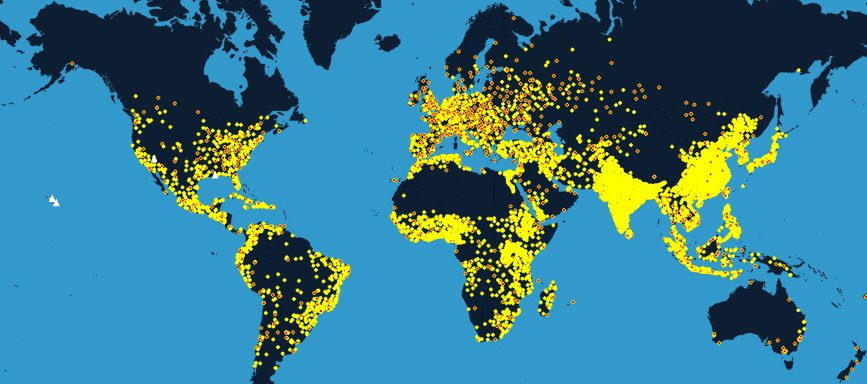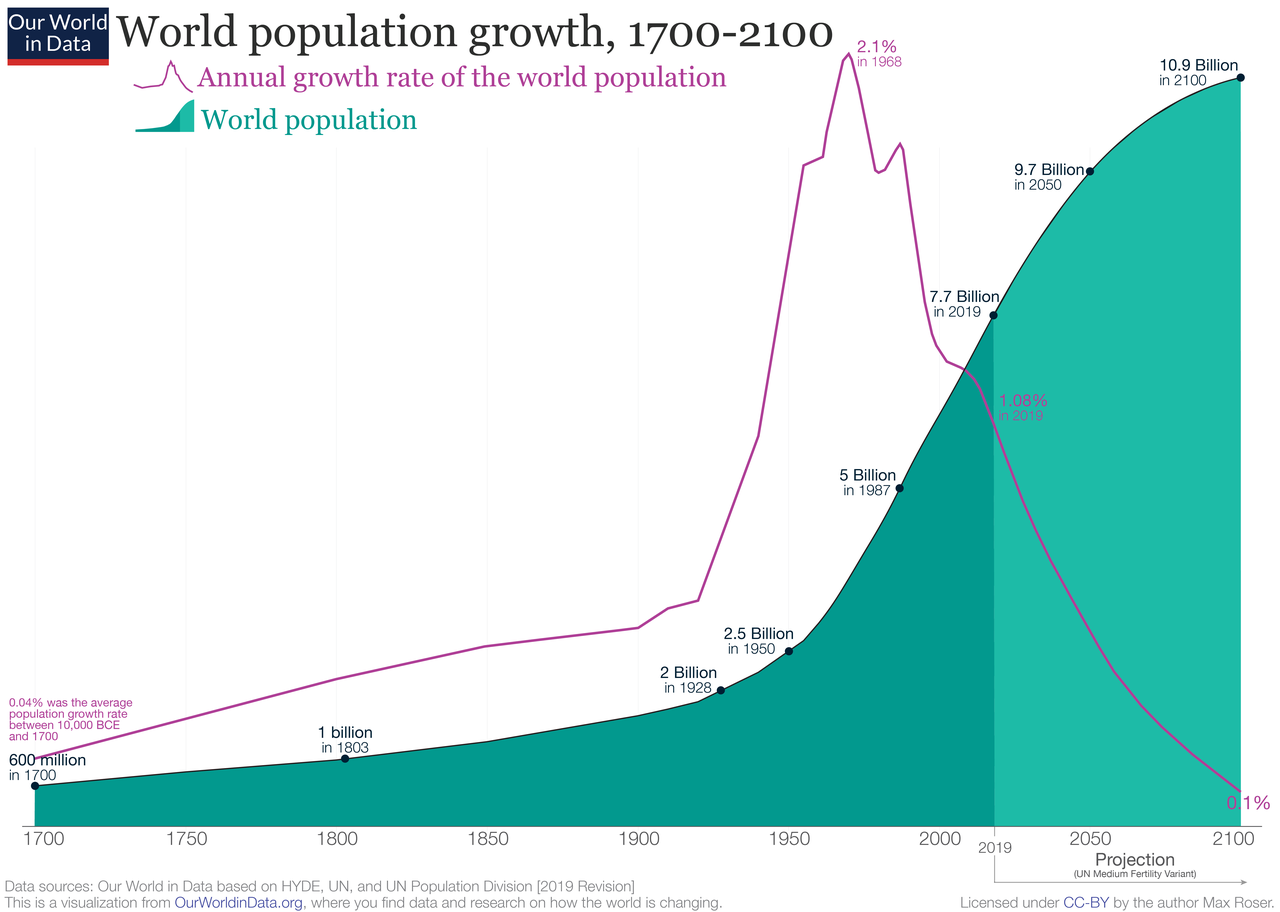(Max Roser) One of the big lessons from the demographic history of countries is that population explosions are temporary. For many countries the demographic transition has already ended, and as the global fertility rate has now halved we know that the world as a whole is approaching the end of rapid population growth.
Related Bombshell Science Paper Documents the Depopulation Chemical Covertly Spiked into Vaccines
by Max Roser, June 20th, 2019
The visualization below presents this big overview of the global demographic transition – with the very latest data from the UN Population Division just published.
As we explore at the beginning of the entry on population growth, the global population grew only very slowly up to 1700 – only 0.04% per year. In the many millennia up to that point in history very high mortality of children counteracted high fertility. The world was in the first stage of the demographic transition.
Once health improved and mortality declined things changed quickly. Particularly over the course of the 20th century: Over the last 100 years global population more than quadrupled. As we see in the chart, the rise of the global population got steeper and steeper and you have just lived through the steepest increase of that curve. This also means that your existence is a tiny part of the reason why that curve is so steep.
The 7-fold increase of the world population over the course of two centuries amplified humanity’s impact on the natural environment. To provide space, food, and resources for a large world population in a way that is sustainable into the distant future is without question one of the large, serious challenges for our generation. We should not make the mistake of underestimating the task ahead of us. Yes, I expect new generations to contribute, but for now it is upon us to provide for them. Population growth is still fast: Every year 140 million are born and 58 million die – the difference is the number of people that we add to the world population in a year: 82 million.
Where do we go from here?
In red you see the annual population growth rate (that is, the percentage change in population per year) of the global population. It peaked around half a century ago. Peak population growth was reached in 1968 with an annual growth of 2.1%. Since then the increase of the world population has slowed and today grows by just over 1% per year.This slowdown of population growth was not only predictable, but predicted. Just as expected by demographers (here), the world as a whole is experiencing the closing of a massive demographic transition.
This chart also shows how the United Nations envision the slow ending of the global demographic transition. As population growth continues to decline, the curve representing the world population is getting less and less steep. By the end of the century – when global population growth will have fallen to 0.1% according to the UN’s projection – the world will be very close to the end of the demographic transition. It is hard to know the population dynamics beyond 2100; it will depend upon the fertility rate and as we discuss in our entry on fertility rates here fertility is first falling with development – and then rising with development. The question will be whether it will rise above an average 2 children per woman.
Buy Book Margaret Sanger’s Eugenic Legacy: The Control of Female Fertility [Planned Parenthood]
The world enters the last phase of the demographic transition and this means we will not repeat the past. The global population has quadrupled over the course of the 20th century, but it will not double anymore over the course of this century.
The world population will reach a size, which compared to humanity’s history, will be extraordinary; if the UN projections are accurate (they have a good track record), the world population will have increased more than 10-fold over the span of 250 years.
We are on the way to a new balance. The big global demographic transition that the world entered more than two centuries ago is then coming to an end: This new equilibrium is different from the one in the past when it was the very high mortality that kept population growth in check. In the new balance it will be low fertility keeps population changes small.
found on Zero Hedge
Stillness in the Storm Editor: Why did we post this?
The preceding information discusses how politics is used as a tool of manipulation. Politics, as a principle, is supposed to be the forum within which a sovereign people discuss issues that matter to them, where new discoveries can be revealed and policies related to how to manage mutually agreed upon values can be made. But today, politics has devolved into a distraction, mass manipulation tool, and the venue through which the unthinking masses append ideological opinions to themselves through identity politics. Properly comprehending this manipulation is important so as to avoid making choices that seem like your own but are in fact a manipulated opinion due to Deep State agendas.
– Justin
Not sure how to make sense of this? Want to learn how to discern like a pro? Read this essential guide to discernment, analysis of claims, and understanding the truth in a world of deception: 4 Key Steps of Discernment – Advanced Truth-Seeking Tools.
Stillness in the Storm Editor’s note: Did you find a spelling error or grammar mistake? Send an email to [email protected], with the error and suggested correction, along with the headline and url. Do you think this article needs an update? Or do you just have some feedback? Send us an email at [email protected]. Thank you for reading.
Source:
https://ourworldindata.org/world-population-growth-past-future


Leave a Reply